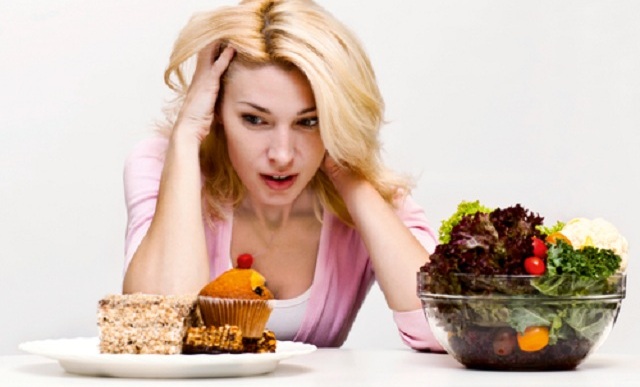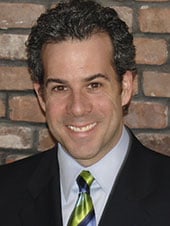Another Way of Thinking About Emotional Eating

For example: If you are in the habit of having a snack while watching television at night, any time you watch television at night, you are likely to experience a desire to eat shortly after you sit down. Are you “in the mood” to eat? Not necessarily. Are you experiencing positive or negative emotions that are triggering a desire to eat? Not necessarily. Are there food cues on television that planted the urge to eat in your mind? Not necessarily. All that happened was that you sat down and turned on the television. But if you’ve sat in front of a television while having a snack over 5,000 times in the past, there’s a very high probability that you will want a snack in situation 5,001.
Emotions, like television are cues. Another word for cue is “stimulus.” If you keep repeating the behavior of eating while watching television, eating eventually becomes a “response” to watching television. This is called Pavolvian Conditioning, which you may remember from a psychology class in high school or college. After enough pairings of television/eat or feel anxious/eat, the occurrence of one triggers the occurrence of the other.
However, there is another part of the story. For the vast majority of us, the immediate consequence of eating is quite positive. Food tastes good and eating feels good. We enjoy eating in restaurants. We enjoy all of the many flavors and textures of food and eating. It is those positive consequences of eating that keep us coming back for more. Learning that occurs through the experience of consequences is called Operant Conditioning. So emotions can be a cue for eating and they can also be a response to eating. Generally, when people speak about emotional eating, they are referring to unpleasant emotions as a stimulus for eating and temporary relief from those unpleasant emotions that the act of eating provides.
When we eat certain foods in response to an emotional cue we often feel better. When you’re upset and you have a bit of chocolate (for example) you experience some pleasure from the taste of the chocolate and perhaps a little relief from your unpleasant feelings. The “pleasant taste” and “relief from unpleasant feelings” reward the behavior of eating and strengthen it over time. If you eat chocolate here and there it’s not a problem. If you do it too often, and rely upon eating as a means of coping with unpleasant emotions, it can quickly become a big problem. It is interesting to note that the “feeling a little better” part is usually quickly replaced with the “feeling guilty and upset with myself” part. This demonstrates how powerful experiencing positive consequences and getting relief from negative emotions can be in maintaining a behavior. But if we know that in the long term this type of eating is unhealthy and self-destructive, why can’t we stop? Why can’t we just learn to let ourselves feel a little uncomfortable or learn other coping strategies? You can. It just takes a greater sense of awareness and a lot of practice. It also requires a change in how we think about emotions.
In our culture, we put our emotions or feelings on a pedestal. We tend to worship our emotions and feelings and talk about them with reverence. We try to break them down and understand and change them, and while there may be some benefit to expending all of this time and effort, with regards to eating, it may be simpler to just think of emotions as just another cue for eating…no different than watching television. So what can you do about emotional eating?
The first step in addressing emotional eating is to learn to be aware that you’re doing it WHEN you’re doing it. Think of it as “freezing time.” Not only is this the first step, it is also the most important step. It is not possible to proceed to the other steps without mastering this step first. In fact, for many people, just noticing that they are eating in response to an emotional cue is enough to stop. Make it a habit to stop for 30 seconds just before every episode of eating. “Freeze time” and ask yourself, “What am I doing? Am I hungry? Am I upset? Am I bored? What am I experiencing that is leading me to want to eat?” Maybe it’s not an emotion at all. Perhaps you’re hungry. Perhaps you can notice that you’re watching television and it’s as simple as that. If it is an emotion, try to figure out which one it is. Anger? Anxiety? Sadness? Depression? See if you can put a name to what you are feeling so that you can identify your specific stimuli or cues for eating. Consider keeping an emotional eating diary and write down whatever emotions/feelings you experience before you eat, every time you eat.
The second step is to sit with the emotion. Now that you’ve frozen time, just experience the emotion you are feeling. Observe it and think about it a little. Notice the physical sensations in your body. Survey the thoughts you are having in conjunction with the feeling. Be present. Maybe even have a dialogue with yourself about it as if you’re watching yourself from above. “Gee that’s interesting. I’m feeling a little nervous about that meeting I have tomorrow and here I am holding a chocolate donut in my kitchen. Wow, I sure have done this many times before. It’s funny. I do really want this donut right now and I’m not even sure why. I wonder what’s going on? My muscles feel a bit tight. I’m thinking about what I’m going to say at the meeting and who will be there. I’m a little uncomfortable, but it’s not really that bad.”
The third step is to practice walking away from the kitchen and considering an alternative to eating that actually better addresses the emotion you’re experiencing. While chocolate donuts may taste good and eating one may temporarily provide a calming effect, it also provides a whole lot of unnecessary calories and chocolate donuts have never been clinically proven to enhance one’s ability to prepare for a business meeting.
Depending on the emotion, there are a number of strategies that could be helpful. Some strategies help with many emotions. Going for a walk, calling a friend, and trying a brief relaxation strategy can help with anxiety, depression and anger. There are an endless number of strategies that you can discover that actually help reduce the emotional upset you are experiencing much better than eating and with fewer weight and health consequences.
This is a big leap for many people. We hold emotions to be sacred and mysterious things and while they are a special part of the human experience, with regards to eating it may be helpful to think of them as just another cue or stimulus…no different than watching television. If you can make that leap then it’s just a matter of becoming more aware of when eating in response to emotions is occurring and learning new responses to replace eating as a means of coping. You’ll feel better that you did!




Alex Brecher 10,484
Posted
Dr. Huberman,
Thank you for this fabulous article! Every part of it is spot on! I really appreciate how you classify emotional eating as a habit, just like eating in other situations when we’re not hungry is a habit.
Each of your suggestions for preventing emotional eating is so helpful. It is unbelievable how effective it can be to simply train yourself to delay eating for 30 seconds. If you can delay 30 seconds, you may be able to delay for a minute, and then 5, and then 30, until the urge passes or it really is time to eat. Or in those 30 seconds, you might be able to talk yourself out of it, or find something more productive to do, like prepare for that meeting!
It is also amazing how little we actually do allow ourselves to feel emotions sometimes, often without even realizing we’re suppressing or avoiding our feelings. Getting to know what they feel like can be scary at first, but so worthwhile because we can become accustomed to feeling them and dealing with them instead of hiding with food (even if it is subconscious, not deliberate, suppression).
Thank you again for these great explanations and suggestions.
Share this comment
Link to comment
Share on other sites